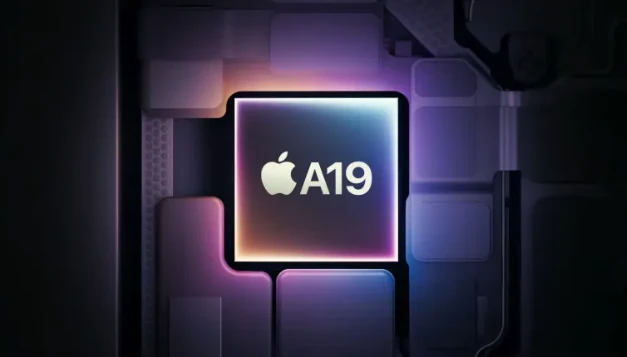Table of Contents
Apple A19 Chip Expands the iPhone 17 Family in a Historic First
At Squaredtech, we cover every Apple development with careful attention to the details that matter to both casual users and professionals. This year, Apple has changed a long-standing tradition with the A19 chip. For the first time in iPhone history, the A19 chip will appear in three distinct versions across the iPhone 17 lineup.
In previous years, Apple’s annual iPhone releases often revolved around a two-tier chip structure. One standard version powered the entry-level iPhone models, while a slightly more advanced chip served the Pro models. The A19 changes this cycle entirely. With three separate versions introduced at launch, Apple signals a more fragmented yet strategically planned approach to performance and device positioning.
The three iPhone 17 models and their chipsets are as follows:
Read More About Our Article of iPhone 17 Shocks Apple Fans With Bold Upgrades and All-New Air Model Published on September 11th, 2025 SquaredTech
- iPhone 17 receives the standard A19 chip.
- iPhone Air introduces the A19 Pro chip with a 5-core GPU.
- iPhone 17 Pro features the A19 Pro chip with a 6-core GPU.
This breakdown not only changes Apple’s chip roadmap but also reshapes how buyers view the iPhone tiers. Squaredtech observes that this segmentation is designed to draw sharper lines between the performance categories, ensuring each model appeals to a clear audience segment.
How the A19 Chip Variants Redefine Performance Across Models
The Standard A19 in iPhone 17

The base iPhone 17 uses the regular A19 chip. While Apple has not released deep technical specifications beyond the expected performance improvements, this chip still represents a generational leap. It continues Apple’s tradition of offering a dependable CPU and GPU combination with higher efficiency compared to previous models. For everyday users, the A19 provides a balanced mix of performance and battery life, ensuring smooth iOS operation without major compromises.
A19 Pro in iPhone Air
The iPhone Air sits between the base iPhone 17 and the flagship Pro. Its A19 Pro chip comes with a 5-core GPU. According to Apple, the Pro variant of the A19 is not just about added graphics capability. It also integrates 12GB of RAM, compared to the 8GB in the non-Pro A19. This makes the iPhone Air ideal for heavier tasks such as gaming, editing, or multitasking.
Although Apple has not explicitly confirmed this, industry observers, including Squaredtech, believe the iPhone Air’s chip is likely a binned version of the Pro chip used in the iPhone 17 Pro. In chip manufacturing, binning refers to the process of using slightly lower-performing chips in devices that do not require maximum output. The missing GPU core is the most visible result of this strategy.
For most users, the missing core in the Air will not impact daily performance. However, it provides Apple with a clever way to differentiate the Air from the Pro while maximizing production efficiency.
A19 Pro in iPhone 17 Pro
The iPhone 17 Pro receives the full A19 Pro chip with a 6-core GPU. This configuration makes it the most powerful iPhone in history. Combined with vapor chamber cooling technology, the Pro is built to sustain higher performance during extended gaming, rendering, or demanding app use.
Squaredtech notes that the vapor chamber cooling system signals Apple’s recognition that the Pro model has moved far beyond casual use. It is now aimed squarely at enthusiasts, professionals, and power users who demand desktop-level performance in a mobile device.
This combination of more RAM, an advanced GPU, and active cooling means that the Pro will likely dominate benchmark tests and deliver a consistent performance edge over both the iPhone Air and the base iPhone 17.
Why Apple Chose Three A19 Chips Instead of Two
Apple has historically kept its iPhone chip lineup simple. The introduction of three chip variants marks a major departure. Squaredtech sees several reasons behind this strategy.
First, Apple faces increased competition from Android manufacturers, many of whom already offer multiple models with nuanced performance tiers. To compete, Apple must create clearer distinctions across its product line.
Second, the iPhone Air is a new mid-tier device that needs more than cosmetic changes to stand out. By placing a Pro-class chip inside, Apple positions the Air as a credible upgrade for users who want power but may not need all the Pro-exclusive features.
Third, Apple is preparing its customer base for even more segmentation in the future. With the iPhone Fold expected next year, and the iPhone 18 shifting to a spring release, Apple will need to diversify chip options further. Introducing three versions now creates a smoother transition for more complex lineups later.
What This Means for the Future: A20 and Beyond
This year marks the first time Apple has released three versions of its flagship A-series chip across iPhones at launch. But Squaredtech analysis suggests this will not be the last.
With the arrival of the iPhone Fold next year, Apple is expected to introduce even more chip diversity. The Fold will require unique hardware optimizations that may not align neatly with either the base or Pro lines. This could lead to more than two A20 chip variants.
Additionally, Apple’s decision to delay the iPhone 18 until spring suggests it will stagger its launches, creating opportunities for distinct chip cycles. Instead of one uniform A-series release per year, we may begin to see multiple tailored versions catering to foldables, Pro devices, and standard iPhones.
This shift means Apple is gradually moving away from a simple “base and Pro” model structure to a more complex hierarchy where chips play a central role in product identity.
Squaredtech Final Analysis
The Apple A19 chip has redefined what buyers can expect from the iPhone 17 family. Instead of sticking to tradition, Apple introduced three versions at once, creating a lineup with sharper performance differences.
- The iPhone 17 keeps the dependable A19 for everyday use.
- The iPhone Air delivers Pro-level performance with its 5-core GPU and higher RAM, despite being slightly under the Pro’s maximum capacity.
- The iPhone 17 Pro sets a new high standard with its 6-core GPU, vapor chamber cooling, and the most powerful chip Apple has ever shipped in an iPhone.
Squaredtech believes this strategy signals Apple’s intention to diversify its product line even further. The A19 chip is not just a technical upgrade. It is the foundation of a larger shift in how Apple plans to define its devices in the coming years. With the iPhone Fold and A20 chip on the horizon, Apple is preparing for a future where performance tiers and hardware segmentation become central to its entire lineup.
The A19 chip is more than a yearly upgrade. It is a turning point that reshapes Apple’s approach to the iPhone family.
Stay Updated: Mobile


